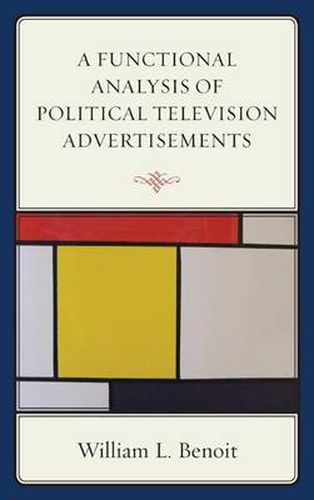Readings Newsletter
Become a Readings Member to make your shopping experience even easier.
Sign in or sign up for free!
You’re not far away from qualifying for FREE standard shipping within Australia
You’ve qualified for FREE standard shipping within Australia
The cart is loading…






A Functional Analysis of Political Television Advertisements examines theory and research on election advertisements. William Benoit employs the Functional Theory of Political Campaign Discourse to understand the nature or content of television spots in election campaigns. Beginning with a look at American presidential spots from 1952-2012, Benoit investigates the three functions-acclaims, attacks, and defenses-and the topics of policy and character for these groups of political commercials. The following chapters are devoted to reporting similar data on presidential primary advertisements, presidential third party spots, other theories including Issue Ownership Theory and Functional Federalism Theory, as well as nonpresidential and non-U.S. election advertising. Benoit considers the data, discusses the development of political advertising over time, and finally, presents areas for further research. This book is a uniquely comprehensive examination of the value and use of television spots in political election rhetoric.
$9.00 standard shipping within Australia
FREE standard shipping within Australia for orders over $100.00
Express & International shipping calculated at checkout
A Functional Analysis of Political Television Advertisements examines theory and research on election advertisements. William Benoit employs the Functional Theory of Political Campaign Discourse to understand the nature or content of television spots in election campaigns. Beginning with a look at American presidential spots from 1952-2012, Benoit investigates the three functions-acclaims, attacks, and defenses-and the topics of policy and character for these groups of political commercials. The following chapters are devoted to reporting similar data on presidential primary advertisements, presidential third party spots, other theories including Issue Ownership Theory and Functional Federalism Theory, as well as nonpresidential and non-U.S. election advertising. Benoit considers the data, discusses the development of political advertising over time, and finally, presents areas for further research. This book is a uniquely comprehensive examination of the value and use of television spots in political election rhetoric.